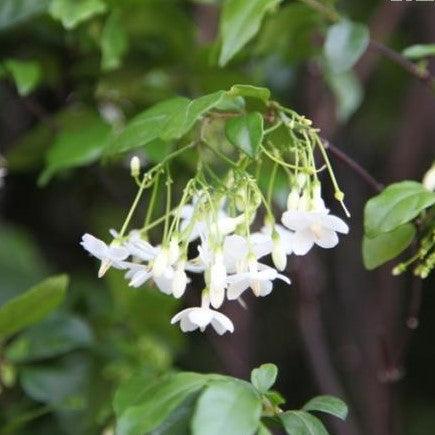- Plant Description:
-
Wrightia religiosa, also known as the Indian coral tree or temple tree, is a species of flowering plant in the Apocynaceae family. It is native to tropical Asia, including India, and is commonly found in gardens and as a roadside shrub. It grows to be a medium-sized tree, reaching heights of up to 12 meters. The leaves are glossy and green, and the flowers are white or pink, occurring in clusters at the end of branches. The plant prefers well-drained soil and a sunny to partially shaded location. It is drought tolerant, and also propagates through stem cuttings. In traditional indian medicine it is used to treat skin diseases, wounds and other ailments..
- Growing tips:
-
Wrightia religiosa is a relatively easy plant to care for, and can thrive in a variety of conditions. Here are some tips for caring for this plant:
-
Light: The plant prefers full sun to partial shade. It can tolerate some shade, but too much shade may result in fewer flowers.
-
Water: The plant is drought-tolerant and can survive with minimal watering, but regular watering will result in more vigorous growth and more flowers. During the growing season, water the plant when the soil feels dry to the touch. Be sure not to over-water, as this can lead to root rot.
-
Soil: The plant prefers well-drained soil, and can tolerate a wide range of soil types. If the soil is heavy or poorly drained, consider adding some coarse sand or gravel to improve drainage.
-
Fertilizer: The plant does not require regular fertilization, but you can feed it every few months with a balanced fertilizer during the growing season for more vigorous growth and more flowers.
-
Pruning: Prune the plant as needed to control its size or shape. Be sure to make clean cuts just above a leaf node to encourage new growth.
-
Pest & Disease: Wrightia is relatively disease resistant. It is not prone to many pest, but spider mites can be a problem. Keep an eye on the undersides of the leaves, and spray the plant with water or insecticidal soap if you notice any mite infestations.
By following these tips, your Wrightia religiosa should thrive and give you beautiful flowers
- Benefits:
-
Wrightia religiosa has a variety of traditional uses and potential health benefits due to its medicinal properties. Here are a few examples:
-
Skin care: The plant has been used in traditional Indian medicine to treat skin disorders such as eczema, boils and wounds. A paste made from the bark is applied to the skin to help heal wounds, reduce inflammation and prevent infection.
-
Astringent Properties: The plant is an astringent and help to check bleeding from cuts and wounds.
-
Diuretic Properties: The plant has diuretic properties and help to increase urine output.
-
Wound Healing: The extract of leaves of Wrightia religiosa have been traditionally used for wound healing and for the treatment of skin ulcers.
-
Immunomodulatory: It is also considered to be immunomodulatory, as it has been found to enhance the activity of the immune system.
It's important to note that while there are traditional uses of Wrightia religiosa and it have potential health benefits, there is a limited amount of scientific research available to support the validity of these claims, and more research is needed. Consult a medical professional before taking any kind of alternative treatment.




